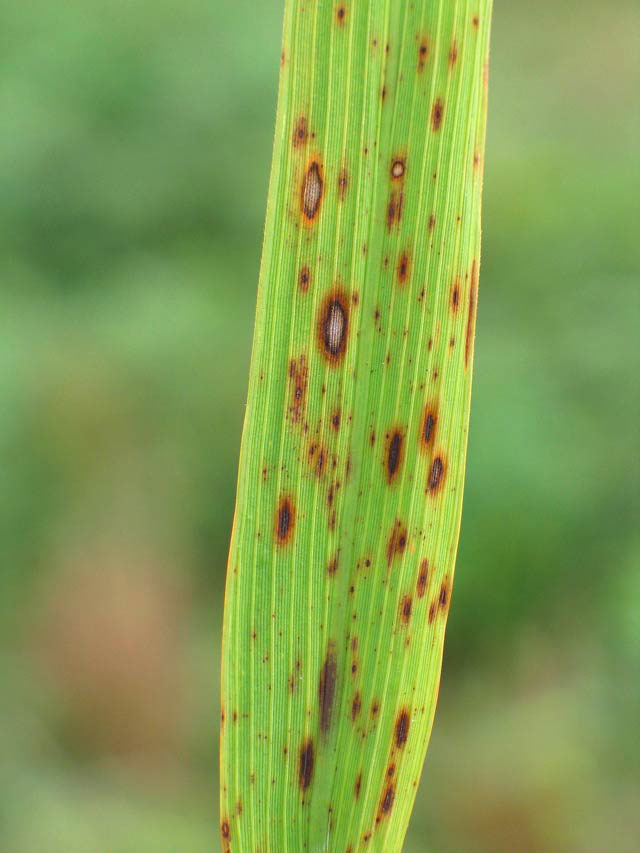
Brown Leaf Spot of Rice:
Description:
Common*(present in all rice growing areas) disease of rice, caused by a fungus that infects coleoptiles*(protective sheath that cover leaf), leaves, panicle, glumes (outer husk surrounding the grain). It can occur at all stages but more severe from tillering to maturity stages.
History and Importance:
It causes high yield losses (up to 90%). It appeared in epidemic form in India and caused complete crop failure that was regarded Great Bengal Famine 1943.
Etiology:
Causal organism: Bipolaris oryzae
Symptoms:
- In early stage small dark brown spots*(necrotic area with defined margin) on leaves, coleoptiles etc.
- With the passage of time oval shaped brown lesions (wound) with grayish centers are found on leaves, coleoptiles.
- Dark brown to black spots on glumes and panicles.
- Infected grains become discolored and are known as “Pecky Rice”
Disease cycle:
- Fungus can survive in seed up to 4 years. Sowing of infected seeds give rise to infected seedlings from where fungal spores spread through air or wind and infect other plants.
- Other sources for survival of fungal spores are weeds and plant debris.
Epidemiology:
Pathogen is the most active at high relative humidity (86-100%) and temperature (16-36°C). Leaf wetness between 8-24 hours favors the disease. Poorly drained and nutrient deficient soils are the hot spot for pathogen multiplication.
Management:
- Pre-sowing hot water treatment of seed at 53-54°C for 10-12 minutes.
- Seed treatment with fungicides i.e. Captan, Thiram, Mancozeb.
- At tillering and booting stage spray with Mancozeb and Tricyclazole.
- Apply calcium silicate before sowing.


